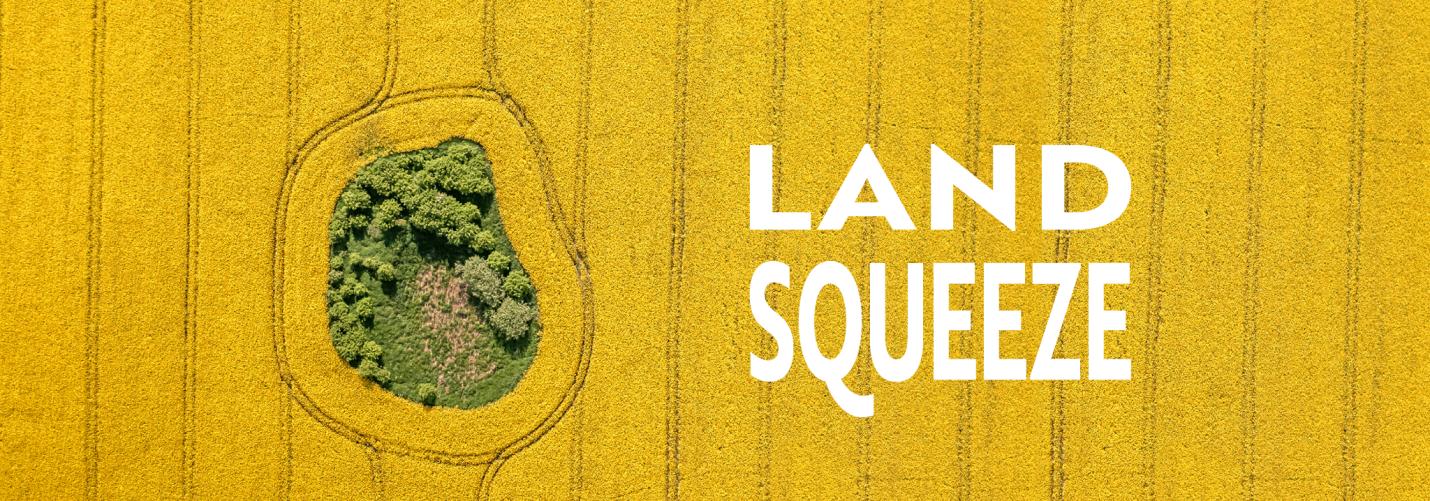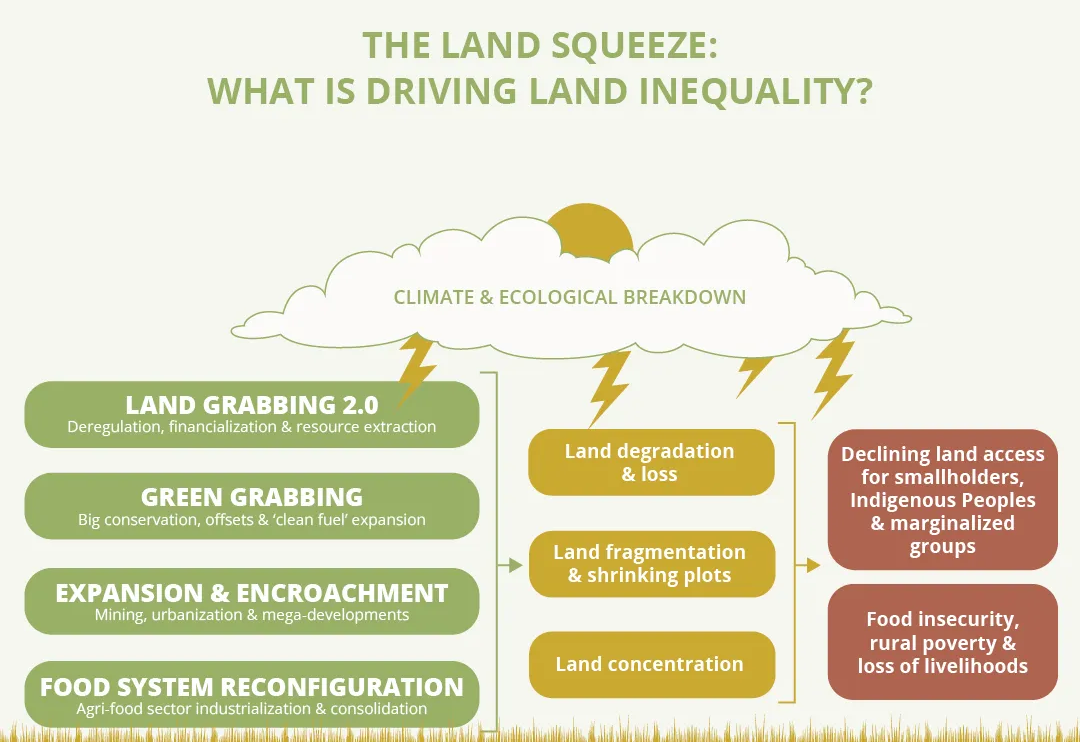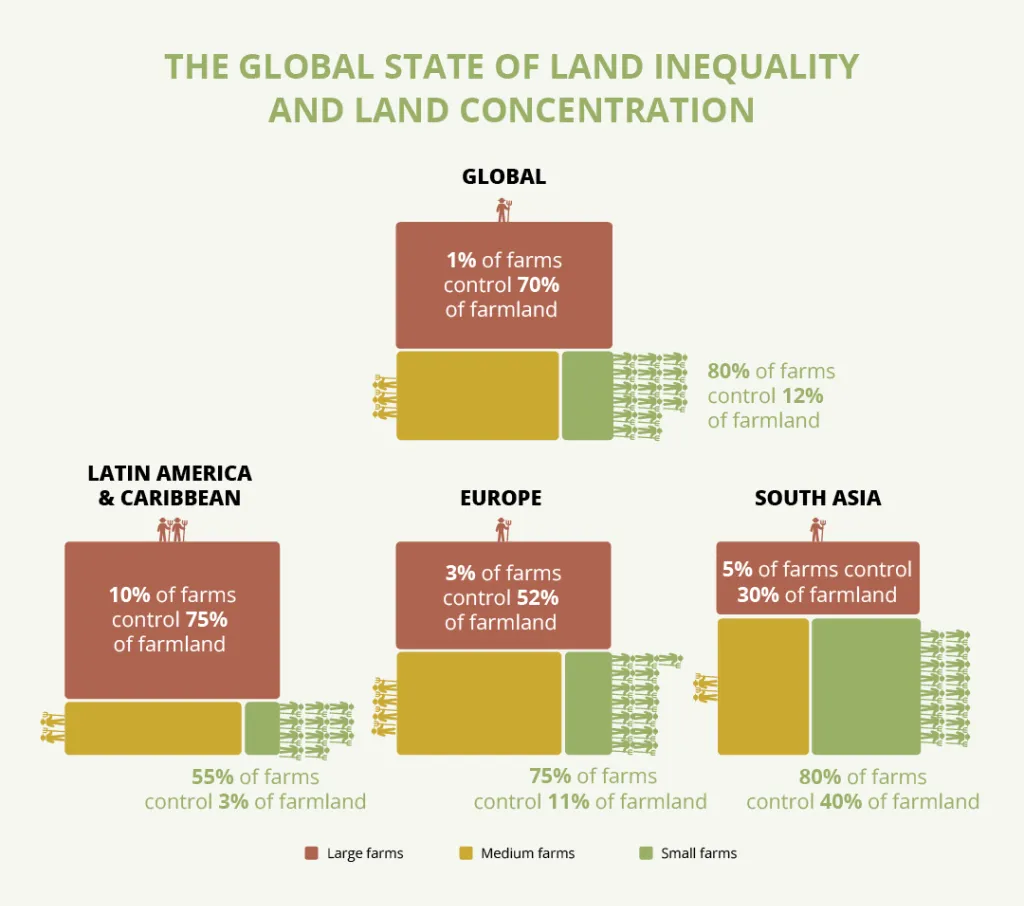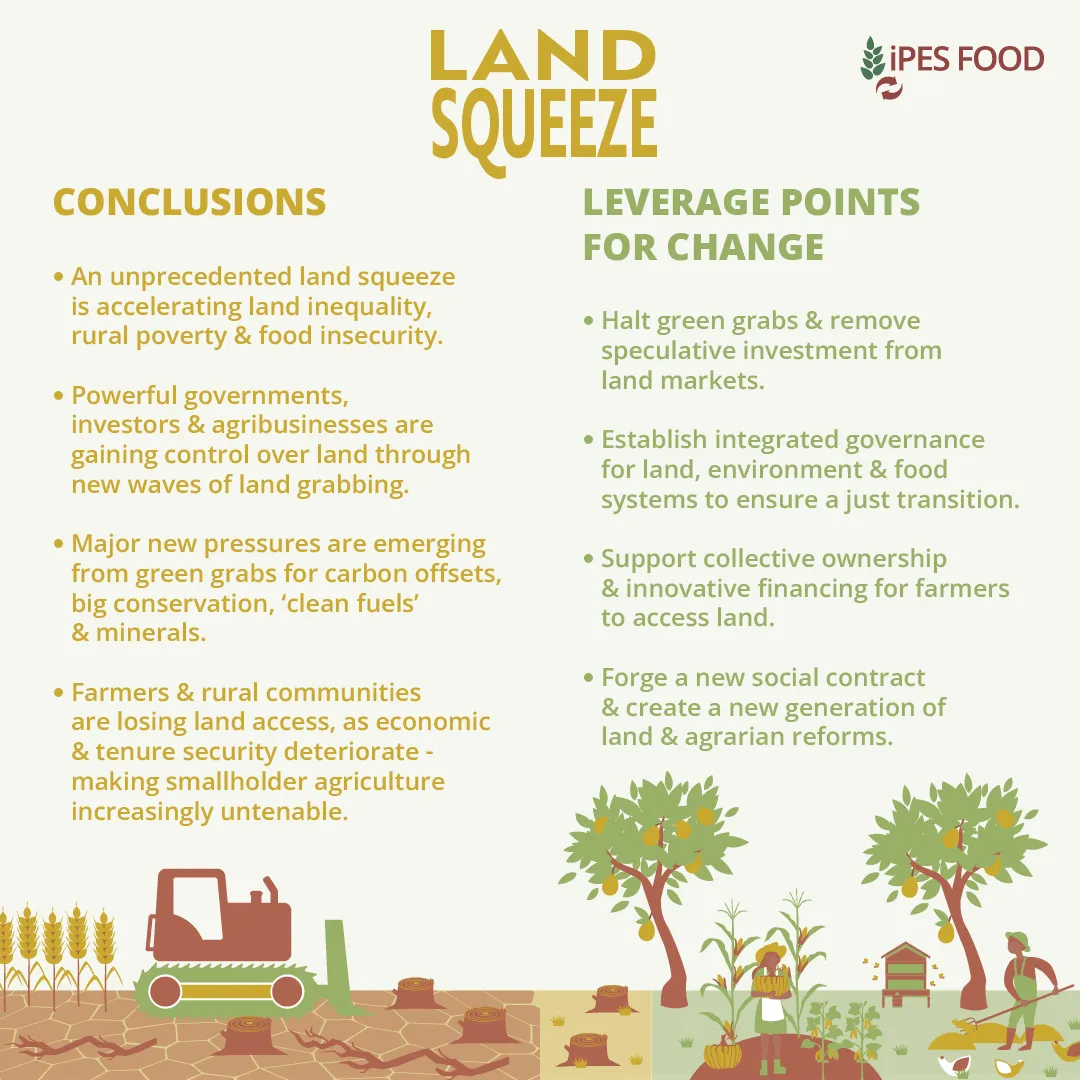Description

Copyright infringement not intended
Picture Courtesy: https://www.producer.com/news/green-grab-warning-issued/
Context: The International Panel of Experts on Sustainable Food Systems (IPES-Food) issued a report titled "Land Squeeze" which raises concerns about a global trend that threatens both food security and the well-being of people living in rural areas.
Details
- The report titled "Land Squeeze" released by the International Panel of Experts on Sustainable Food Systems (IPES-Food) highlights alarming trends in land grabbing and "green grabs" for carbon and biodiversity offset projects. These activities have significant implications for land ownership, agricultural sustainability, and food security globally, with specific impacts on regions of high biodiversity and areas with vulnerable communities like sub-Saharan Africa, Latin America, and South Asia.

Key Findings:
- The report reveals increase in land acquisitions through transnational deals since 2000. The total area acquired is equivalent to the size of Germany, highlighting the vast scale of this trend.
- This land grab is further exacerbated by the concentration of ownership. A mere 1% of the world's largest farms now control a whopping 70% of global farmland. This indicates a shift towards large-scale, potentially unsustainable agricultural practices.
Land Ownership Inequality
- In India, the top 10% own 45% of farmland, reflecting significant land ownership disparities.
- Globally, land inequality is increasing rapidly, affecting regions such as central-eastern Europe, North and Latin America, and South Asia.
The Rise of "Green Grabs"
- A new trend emerges – "green grabs." Governments and corporations are acquiring land for carbon offset projects and biodiversity initiatives under the umbrella of environmental protection.
- The report raises serious concerns about the effectiveness and transparency of these green grabs. It questions whether these projects genuinely deliver the promised climate benefits.
Impact on Small-scale Farming
- Land grabbing and green grabs exacerbate land inequality, making small- and medium-scale food production increasingly unviable. This leads to farmer revolts, rural exodus, rural poverty, and food insecurity.
Drivers of Land Squeeze
- Opaque financial instruments, speculative buying, rapid resource extraction, and intensive export crop production contribute to the escalation of land grabbing.
Effect of Green Grabs
- Green grabs for carbon and biodiversity offset projects account for 20% of large-scale land deals, despite limited evidence of climate benefits.
- Dubious carbon projects, tree planting schemes, and clean fuels initiatives displace small-scale farmers and Indigenous Peoples, particularly in Africa.
Financialization of Land Markets
- Governments' pledges for land-based carbon removals total almost 1.2 billion hectares, equivalent to global cropland.
- Carbon offset markets were valued at $414 billion globally by 2023 and are projected to rise to $1,800 billion by 2030.

Consequences of Land Squeeze
- Increased Land Inequality: As large entities acquire land, the gap between large landowners and small farmers widens, further marginalising smaller producers.
- Difficulties for Small-Scale Farmers: Limited access to land makes it increasingly difficult for small and medium-scale farmers to operate, impacting food production and rural livelihoods.
- Displacement and Poverty: Land grabs can displace farmers and indigenous people from their land, leading to rural poverty and social unrest.
- Food Insecurity: With fewer small-scale farmers producing food, overall food security becomes threatened.
Recommendations and Calls to Action
- Addressing Rural Decline: Implement comprehensive rural development strategies that go beyond just agriculture. This could include investing in infrastructure, education, healthcare, and market access for rural communities. By creating a more attractive and viable rural life, these initiatives can incentivize young people to stay in rural areas and pursue careers in agriculture.
- Investing in Sustainable Farming: Provide financial and technical assistance to small-scale farmers to adopt sustainable farming practices that are both productive and environmentally friendly. This could involve promoting techniques like crop rotation, cover cropping, and integrated pest management. Additionally, research and development efforts should be directed towards developing climate-resilient crops and agricultural methods.
- Empower Local Communities in Conservation: Move away from top-down conservation approaches and empower local communities to participate in and manage conservation efforts on their land. This could involve creating co-management agreements between governments, NGOs, and local communities. Local communities often have a deep understanding of their ecosystems and a vested interest in their long-term sustainability. By giving them a greater role in conservation efforts, policymakers can ensure that these efforts are both effective and culturally sensitive.

Steps to halt bogus green grabs and ensure genuine conservation efforts
Transparency and Scrutiny
- Independent Review Boards: Establish independent review boards to evaluate proposed land acquisitions for conservation projects. These boards should assess the project's environmental and social impact, ensuring genuine benefits for both biodiversity and local communities.
- Community Consent: Make community consent a mandatory requirement for any conservation project. Local communities must be fully informed about the project's goals, potential impacts, and how they will benefit. Their consent should be obtained through a transparent and inclusive process, free from coercion.
- Clear Project Goals and Monitoring: Clearly define the project's goals and establish robust monitoring mechanisms to track progress and assess the project's actual impact on biodiversity and local livelihoods. This data should be publicly available for scrutiny.
Community Involvement and Empowerment
- Community-led Conservation: Support and empower local communities to develop and manage their conservation initiatives. This could involve providing training, funding, and technical assistance to help communities develop sustainable practices that protect their environment while also generating income and improving livelihoods.
- Benefit-sharing Mechanisms: Establish clear and equitable benefit-sharing mechanisms that ensure local communities directly benefit from conservation efforts. This could involve providing economic incentives like payments for ecosystem services, or opportunities for sustainable resource utilisation like ecotourism ventures that are managed by local communities.
- Capacity Building: Invest in capacity-building programs for local communities. This could include training in sustainable land management practices, biodiversity monitoring, and business skills development. By empowering communities with relevant knowledge and skills, they can become active participants in conservation efforts.
Strengthening Governance Frameworks
- Strong Legal Frameworks: Develop and enforce strong legal frameworks that protect land rights, particularly the rights of indigenous communities. These frameworks should also ensure clear ownership and transparent land use practices.
- Accountability of Corporations and Governments: Increase accountability for both corporations and governments involved in land acquisitions. This could involve stricter environmental and social impact assessments, as well as mechanisms to hold actors accountable for any violations.
- International Collaboration: Encourage international collaboration to address the issue of green grabs. This could involve developing shared standards and best practices for responsible land acquisitions in the context of conservation efforts.

Conclusion
- The report emphasises the need for responsible governance, equitable land distribution, and sustainable development practices to mitigate the negative impacts of land grabs and promote food security, especially for vulnerable populations dependent on small-scale agriculture.
Source:
Down to Earth
|
PRACTICE QUESTION
Q. How to effectively balance the need for increased food production (potentially requiring large-scale agriculture) with the need to protect biodiversity and support small-scale farmers in the face of land squeeze? Is there a way to achieve all three objectives simultaneously?
|



















